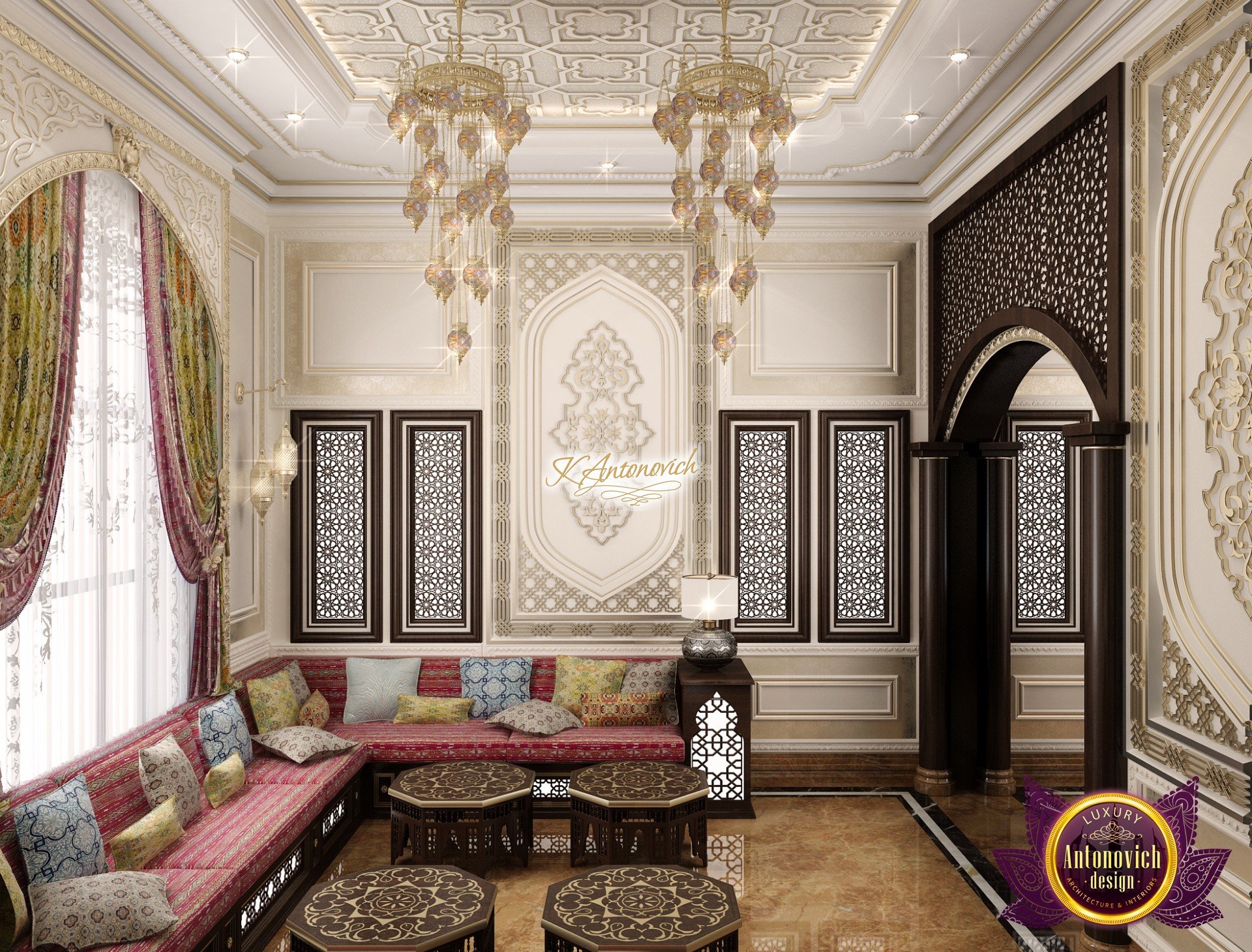Exploring the Essence of Arabic Interior Design

Arabic interior design is a captivating fusion of history, culture, and artistry. Its roots can be traced back to ancient civilizations, where nomadic tribes adorned their tents with intricate patterns and vibrant colors. Over centuries, these traditions evolved under the influence of Islamic architecture, resulting in the distinctive style we recognize today.
The intricacies of Arabic interior design have captivated many for centuries. If you’re seeking to delve deeper into this captivating field, consider pursuing a formal education in interior design. Through such a program, you’ll gain a comprehensive understanding of design principles, space planning, and the rich history of Arabic interior design.
Traditional Arabic Architectural Elements
Traditional Arabic architecture is characterized by its use of arches, domes, and courtyards. Arches, often pointed or horseshoe-shaped, create a sense of grandeur and elegance. Domes, both large and small, provide a focal point and allow for natural light to flood the interior. Courtyards, often adorned with fountains or lush greenery, serve as a central gathering space and a connection to the outdoors.
The intricate patterns and rich colors of Arabic interior design have captivated design enthusiasts for centuries. While the traditional elements of this style continue to inspire, contemporary designers are incorporating modern techniques to create captivating spaces. For aspiring interior designers, pursuing an education at a reputable interior design uni can provide the knowledge and skills necessary to excel in this field.
By studying the principles of design, space planning, and material selection, students can gain a deep understanding of the art and craft of creating beautiful and functional interiors, while staying grounded in the timeless elegance of Arabic design.
Patterns, Colors, and Textiles, Arabic interior design
Arabic interior design is renowned for its vibrant patterns, rich colors, and luxurious textiles. Geometric patterns, inspired by Islamic art, are often found on walls, ceilings, and furniture. Colors, such as gold, blue, and green, are used to create a sense of opulence and harmony. Textiles, such as silk, velvet, and brocade, are used to add a touch of luxury and comfort to the space.
Contemporary Adaptations of Arabic Design

Modern interpretations of Arabic interior design principles showcase a harmonious blend of traditional elements with contemporary styles. Designers skillfully incorporate geometric patterns, intricate motifs, and rich colors into modern spaces, creating a unique and visually captivating aesthetic.
Innovative Use of Materials and Technologies
Contemporary Arabic-inspired interiors embrace new materials and technologies to create innovative and functional spaces. Glass, metal, and concrete are used alongside traditional materials like wood and stone to create striking contrasts and enhance the overall design. Advanced lighting techniques highlight architectural details and create dramatic effects, while smart home systems provide convenience and comfort.
The Art of Arabic Interior Decoration

Arabic interior design is characterized by its intricate and opulent decor. Lighting, furniture, and accessories play a crucial role in creating a harmonious and inviting atmosphere, reflecting the region’s rich cultural heritage and traditions.
Lighting
Lighting is an essential element in Arabic interior design. Traditional Arabic homes often feature intricate chandeliers and lanterns, casting a warm and inviting glow throughout the space. These lighting fixtures are often adorned with intricate metalwork and colorful glass, creating a mesmerizing play of light and shadow.
Furniture
Arabic furniture is renowned for its exquisite craftsmanship and attention to detail. Traditional pieces are typically made from dark woods such as ebony or walnut, and feature intricate carvings and inlaid designs. Sofas and chairs are often upholstered in rich fabrics, such as velvet or silk, and adorned with decorative cushions and throws.
Accessories
Accessories play a vital role in completing the look of an Arabic interior. Carpets, rugs, and tapestries add warmth and texture to the space, while decorative objects such as vases, bowls, and sculptures provide a touch of opulence. These accessories are often adorned with traditional Arabic motifs, such as geometric patterns, calligraphy, and floral designs.